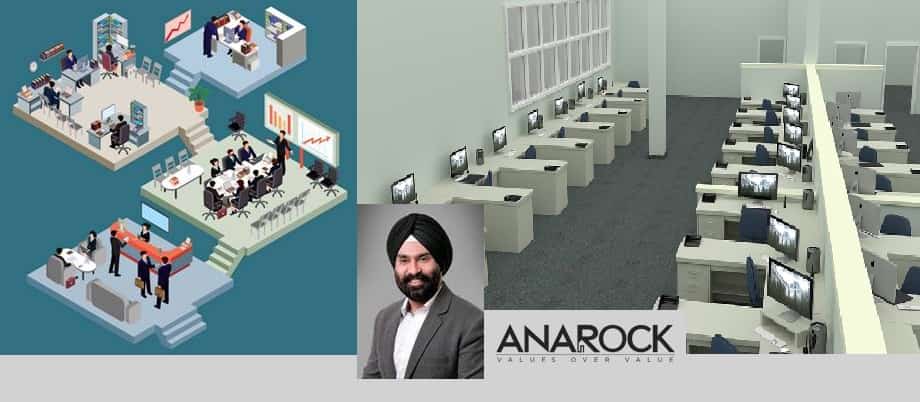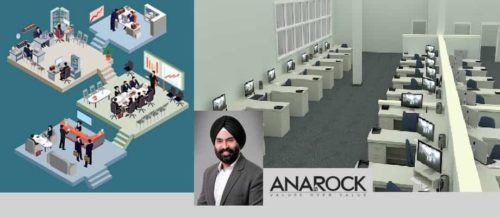

The best companies attract the best talent, but the best talent also knows its value and will always have its sights on even better opportunities. This is why a top-ranking company will focus on employee retention at least as much as on acquiring right talent.
The fact that the best talent will be the most productive is more or less a given – that’s why they are the best. A company’s most productive employees will bring personal accountability and ownership to their work, so they know that their productivity is closely interlinked with their own career growth within the firm.
However, it goes without saying that an organization must also do everything it can to foster not only employee productivity but also satisfaction and a sense of being valued, and ‘belonging’. One of the primary means of doing this is by providing an enabling workplace environment. Adopting an open office plan can be one of the best ways of achieving this.
Open offices have their detractors – and, in many individual cases, some of the objections do have merit. However, it is also true that when an open office fails to yield the desired results and even result in decreased productivity, it is not because of a flawed concept but because of faulty implementation.
Without a doubt, the worst mistakes a company considering the adoption of an open office workplace environment are applying a cookie-cutter approach and not factoring in the specific needs of their business and employees.
Getting the Equation Right
Getting the open office equation right helps employees to feel unrestricted and simultaneously encourages productive interactions. Getting it wrong results in demotivated, unenthusiastic and downright resentful employees.
In the first place, it is important to understand that open office may not be the best model for every type of business. For instance, employees of software companies – particularly those focused on the gaming and KPO verticals – and banking firms may not necessarily thrive in such an environment.
However, the open office plan is ideal for companies whose business model is essentially consultative and collaborative. For example, let us take the real estate consultancy business. A lot of the work which happens in a successful real estate consultancy is, almost by definition, consultancy based.
The consulting aspect is not merely an outward function related to clients, but also an inward-focused dynamic involving the free exchange of knowledge and information. The open office plan works precisely in this manner – it encourages interaction, teamwork and the free flow of information. These are critical ingredients for success in a real estate consultancy.
Essential Success Ingredients
A company must ensure that the adoption of the open office plan does not involve congested pockets but a due level of personal space. Simply jamming large populations together without any particular plan, merely to yield as many workspaces as possible, is rarely anything but counter-productive.
The plan must be a welcoming one, and for this, spaciousness and the right facilities for different functions to deliver on their assigned work are de rigueur.
At the same time, provisions need to be made for closed spaces to enable fruitful focus teamwork. Open seating spaces need to be complemented with breakout rooms for smaller team meetings and meetings with clients, as well as recreational areas. Another very essential aspect is the provision of sufficient close-door ‘phone booths’ integrated into the plan to enable an unhindered environment for important or confidential calls.
Another aspect that must be factored in is that different teams have different ways of working optimally. For instance, a research team needs a certain degree of privacy as the research process is intensely academic and often also involves confidential data.
Transaction teams, on the other hand, must invariably work in close conjunction with each other – especially in the case of multi-platform mandates, which require the involvement of several different teams.
From ‘Closed’ to ‘Open – Overcoming Change Resistance
The open office plan requires a change of mindset for everyone coming from a background of traditional office setups. The senior leadership must lead by example by being the first and quickest to adapt. Many new firms today began with the open office plan. However, many employees – including senior management – tend to come from a traditional office environment.
Throwing everyone into the water and assuming that they will swim because there is no other option is not the right way of approaching the inevitable change resistance. It is important that the company creates sufficient awareness about the undoubted benefits of the open office layout.
The Human Resources team can achieve much of this task at the time of recruitment, and this would be an ongoing process in a constantly growing firm. Audio-visuals which explain the open office philosophy in general and the specific layout in this company, in particular, can be very useful in helping new employees to grasp its purposes and benefits.
Simultaneously, the organization must ensure that the open office plan remains inherently flexible. The eventuality of future changes must be factored in at the design stage itself. The company must always open to suggestions for certain changes from all levels of staff, take genuinely valuable suggestions seriously and also implement them.
The idea should not be to enforce a rigid system but to create a wholesome, dynamic work environment which can change according to evolving needs.
Here are some broad-based suggestions on getting the open office equation right:
- Provide a recreational area and a friendly, welcoming cafeteria. Without these, it all boils down to work, counter-intuitively resulting in the least productive of work environments.
- Incorporate the concept of collaborative spaces into the workplace design – workstations designed with semi-informal elements like sofas, cushioned high chairs, lounge furniture and roundtables which help break the monotonous line-seating arrangement, enable informal interactions and collaboration, and create a ‘cool’ work-environment preferred by millennials.
- Ensure availability of adequate natural light and use motion-sensor lights to ensure that the workplace enables productivity while remaining sustainable and energy-efficient
Probably most importantly, do not rely on workplace design elements alone, but support these with engaging initiatives to ensure employees remain enthused and in a positive state of mind. The open office model can be ideal for fostering a sense of strength in numbers, and non-work related activities which reinforce this feeling can bring out the best in people.
How to Make the Open Office Plan Work





